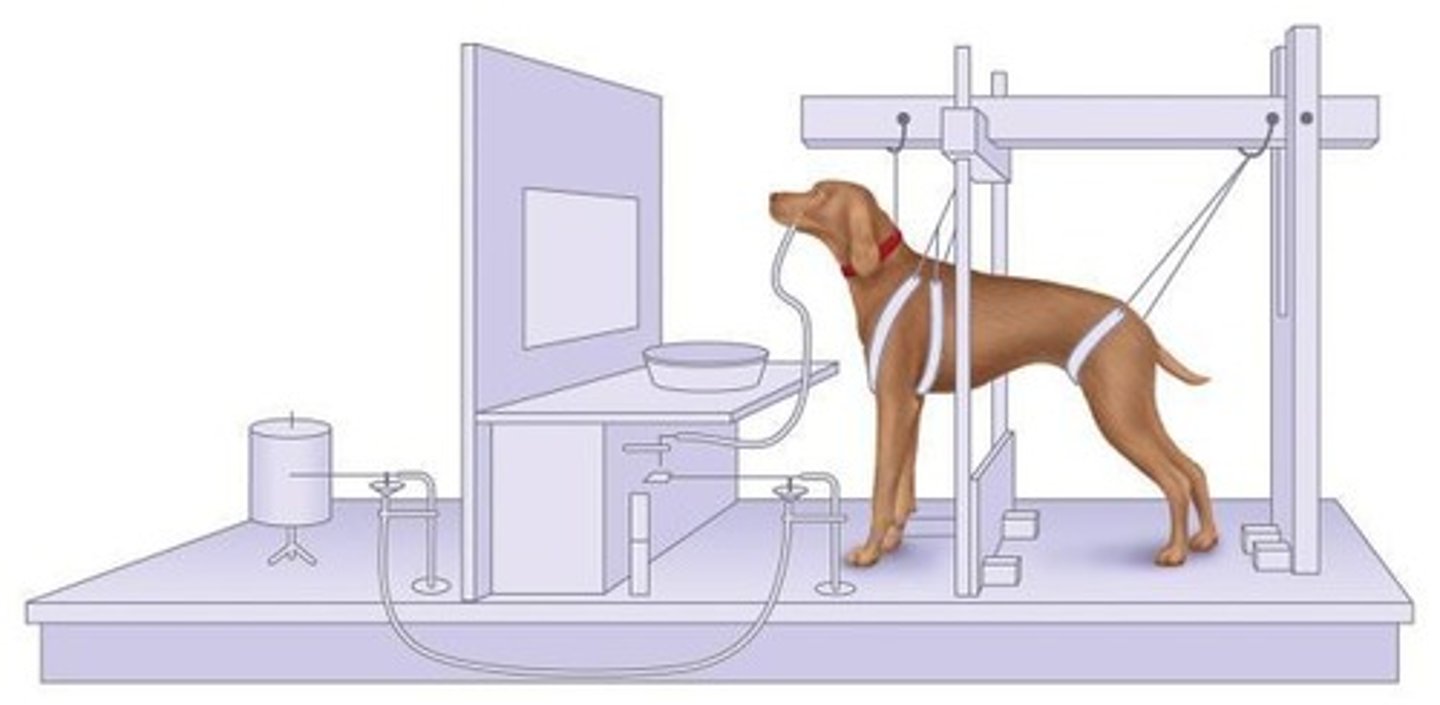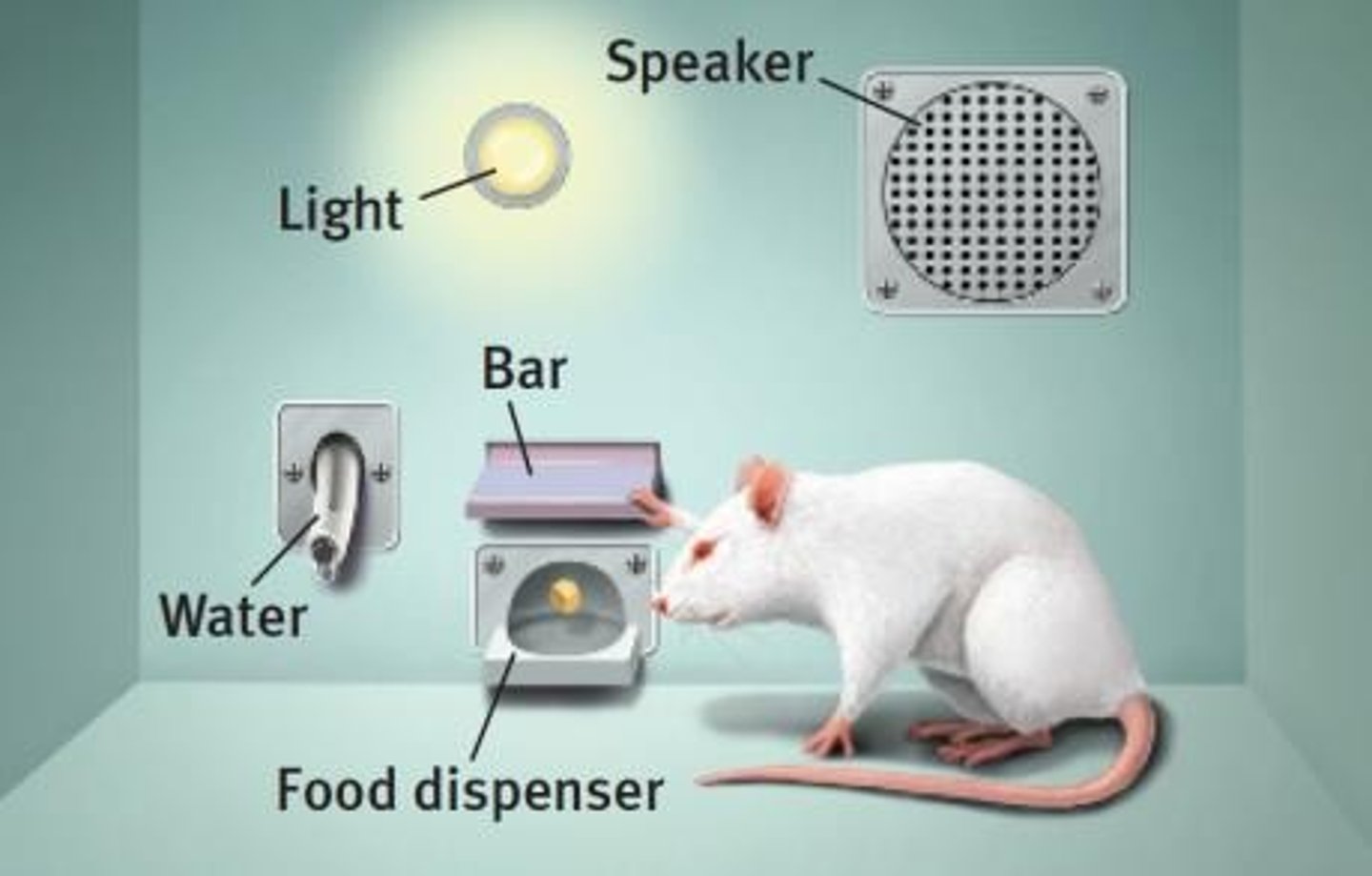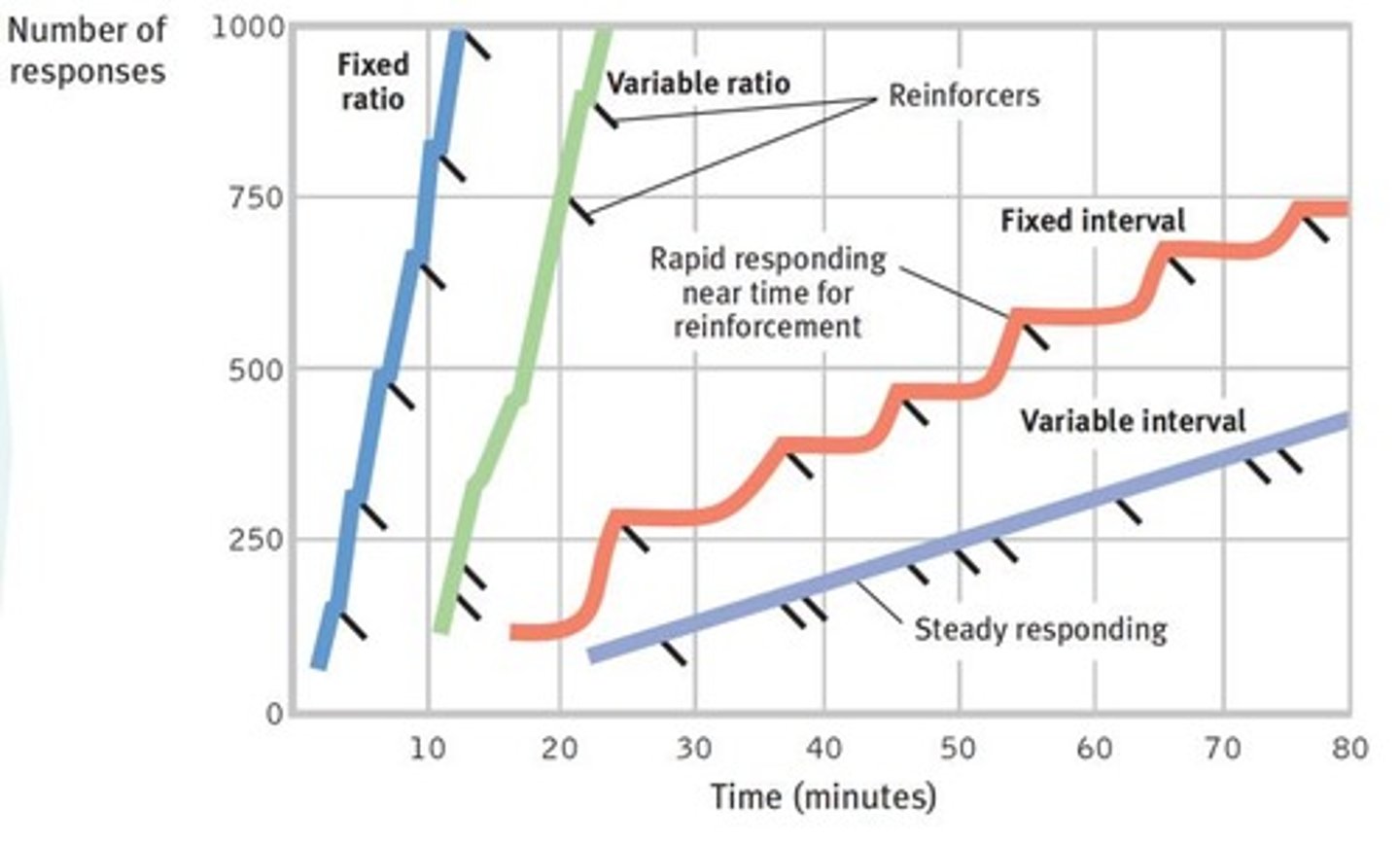Introduction to Psychology: Classical & Operant Conditioning, Learning Theories, and Observational Learning
1/73
There's no tags or description
Looks like no tags are added yet.
Name | Mastery | Learn | Test | Matching | Spaced |
|---|
No study sessions yet.
74 Terms
Learning
Process of acquiring through experience new information or behaviors.
Classical Conditioning
Learning to link two or more stimuli and anticipate events.
Neutral Stimulus (NS)
A stimulus that elicits no response before conditioning.
Unconditioned Response (UR)
An unlearned, naturally occurring response (such as salivation) to an unconditioned stimulus (US) (such as food in the mouth).
Unconditioned Stimulus (US)
A stimulus that unconditionally—naturally and automatically—triggers an unconditioned response (UR).
Conditioned Response (CR)
A learned response to a previously neutral stimulus.
Acquisition
Initial stage, when one links a neutral stimulus and an unconditioned stimulus so that the neutral stimulus begins triggering the conditioned response.
Extinction
Diminishing of a conditioned response; occurs in classical conditioning when an unconditioned stimulus (US) does not follow a conditioned stimulus (CS).
Spontaneous Recovery
Reappearance, after a pause, of an extinguished conditioned response.
Generalization
Tendency, once a response has been conditioned, for stimuli similar to the conditioned stimulus to elicit similar responses.
Discrimination
Learned ability to distinguish between a conditioned stimulus (which predicts the US) and other irrelevant stimuli.
Coffee (in classical conditioning example)
Unconditioned Stimulus (US) that makes a college student feel energized.
Energy (in classical conditioning example)
Unconditioned Response (UR) to the Unconditioned Stimulus (US) of coffee.
Coffee cup (in classical conditioning example)
Conditioned Stimulus (CS) that elicits a response after conditioning.
Wish for caffeine (in classical conditioning example)
Conditioned Response (CR) to the Conditioned Stimulus (CS) of the coffee cup.
Watson
Psychologist influenced by Pavlov, known for his work in behaviorism.
Pavlov
Studied the digestive system and demonstrated associative learning via salivary conditioning.

Behaviorism
Psychology should be an objective science that studies behavior without reference to mental processes.
Pavlov's Principles
Used to influence human health and well-being in areas such as consciousness, motivation, emotion, health, psychological disorders, and therapy.
Addiction Counseling
Addicts are counseled to avoid stimuli that may trigger cravings.
Taste and Immune Response
Pairing a particular taste with a drug that influences immune responses may eventually lead to a response from taste alone.
Watson's Ideas
Human emotions and behaviors, though biologically influenced, are mainly conditioned responses.
Little Albert Study
Watson applied classical conditioning principles to demonstrate how specific fears might be conditioned.
Operant Conditioning
Behavior operates on the environment to produce rewarding or punishing stimuli.
Thorndike's Law of Effect
Rewarded behavior is likely to recur.
Skinner's Experiments
Expanded on Thorndike's law of effect and developed behavioral technology and principles of behavior control.
Skinner Box
A device designed for experiments where a rat presses a bar for a food reward, with a measuring device recording responses.

Reinforcement
Any event that strengthens a preceding response.
Shaping
Gradually guiding toward closer and closer approximations of the desired behavior.
Positive Reinforcement
Increases behaviors by presenting positive reinforcers.

Positive Reinforcer
Any stimulus that, when presented after a response, strengthens the response.
Negative Reinforcement
Increases behaviors by stopping or reducing negative stimuli.
Negative Reinforcer
Any stimulus that, when removed after a response, strengthens the response.
Primary Reinforcer
Is unlearned; innately reinforcing stimuli.
Conditioned (Secondary) Reinforcer
Gains power through association with primary reinforcer.
Immediate Reinforcement
Occurs immediately after a behavior.
Delayed Reinforcement
Involves time delay between desired response and delivery of reward.
Reinforcement Schedule
Includes pattern that defines how often a desired response will be reinforced.
Continuous Reinforcement Schedule
Involves reinforcing the desired response every time it occurs.
Partial (Intermittent) Reinforcement
Includes schedule reinforcing a response only part of the time; results in slower acquisition of a response but much greater resistance to extinction than does continuous reinforcement.
Fixed Interval Schedule
Reinforce first response after specific interval.
Fixed Ratio Schedule
Reinforced after every x responses.
Variable Ratio Schedule
Reinforced after unpredictable number of responses.

Variable Interval Schedule
Reinforce first response after unpredictable interval.
Positive Punishment
Presenting a negative consequence after an undesired behavior is exhibited, making the behavior less likely to happen in the future.

Negative Punishment
Removing a desired stimulus after particular undesired behavior is exhibited, resulting in reducing behavior in future.
Drawbacks of Physical Punishment
Punished behavior is suppressed, not forgotten; may teach fear; can increase aggression by modeling aggression as a way to cope with problems.
Applications of Operant Conditioning
Used in schools, sports, workplaces, and at home to shape behavior.
Reinforcing Desired Behavior
State a realistic goal in measurable terms; monitor how often you engage in your desired behavior; decide how, when, and where you will work toward your goal; reinforce the desired behavior; reduce the rewards gradually.
Response in Classical Conditioning
Involuntary, automatic.
Response in Operant Conditioning
Voluntary, operates on environment.
Acquisition in Classical Conditioning
Associating events; NS is paired with US and becomes CS.
Acquisition in Operant Conditioning
Associating response with a consequence (reinforcer or punisher).
Extinction in Classical Conditioning
CR decreases when CS is repeatedly presented alone.
Extinction in Operant Conditioning
Responding decreases when reinforcement stops.
Spontaneous Recovery in Classical Conditioning
The reappearance, after a rest period, of an extinguished CR.
Spontaneous Recovery in Operant Conditioning
The reappearance, after a rest period, of an extinguished response.
Generalization in Classical Conditioning
The tendency to respond to stimuli similar to the CS.
Generalization in Operant Conditioning
Organism's response to similar stimuli is also reinforced.
Discrimination in Classical Conditioning
The learned ability to distinguish between a CS and other stimuli that do not signal a US.
Discrimination in Operant Conditioning
Organism learns that certain responses, but not others, will be reinforced.
Biological Constraints on Conditioning
Limits on classical conditioning.
Garcia and Koelling's Research
Animals and humans seem biologically prepared to learn some associations rather than others.
Cognitive Processes in Classical Conditioning
Mental information that guides behavior is acquired through cognitive learning.
Cognitive Processes in Operant Conditioning
Evidence of cognitive processes.
Observational Learning
Higher animals learn without direct experience by watching and imitating others.
Bandura
Pioneer researcher of observational learning.
Vicarious Reinforcement
Reinforcement that occurs when an observer sees the model reinforced.
Vicarious Punishment
Punishment that occurs when an observer sees the model punished.
Mirror Neurons
Frontal lobe neurons that fire when performing certain actions or when observing another doing so.
Prosocial Effects of Observational Learning
Behavior modeling enhances learning of communication, sales, and customer service skills in new employees.
Antisocial Effects of Observational Learning
Abusive parents may have aggressive children.
Correlation Studies
Studies that show relationships between variables but do not imply causation.
Experimental Studies
Studies that involve manipulation of variables to determine cause and effect.